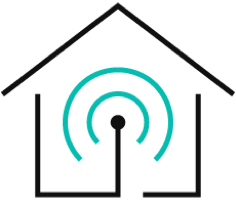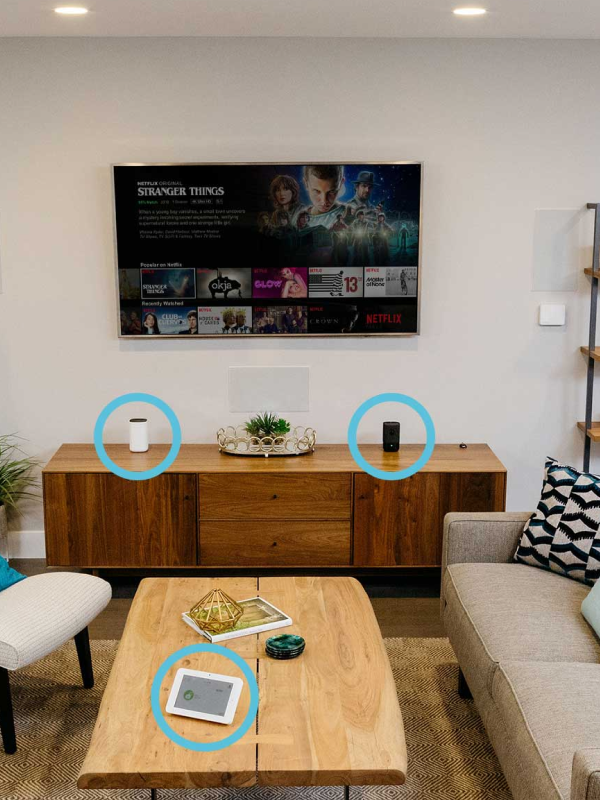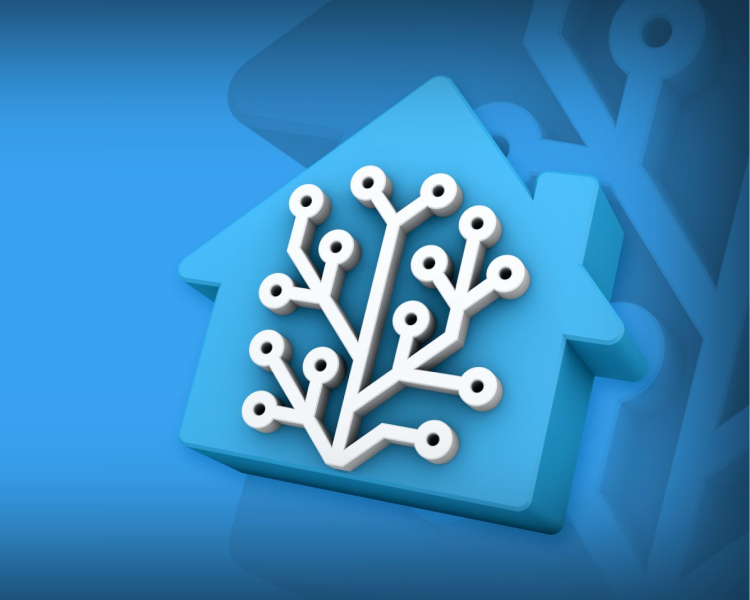Picture this: It's a crisp morning, and you're just waking up to the gentle melody of your favorite song. As you stretch and yawn, the lights in your bedroom gradually brighten, mimicking the soft glow of the rising sun. Meanwhile, your coffee maker hums to life in the kitchen, brewing your perfect cup of joe to kick-start your day. All of this magic happens seamlessly, thanks to the interconnected devices that make up your smart home.
In an era where technology has woven itself into the fabric of our daily lives, smart homes have emerged as a remarkable way to enhance convenience, comfort, and efficiency. The ability to control your lights, thermostats, security cameras, and even your coffee maker with just a tap on your smartphone is no longer a fantasy—it's a reality.
However, with a plethora of smart home platforms available, each boasting its unique set of features and capabilities, navigating this complex landscape can feel like embarking on a journey without a map.
This is where we step in, ready to guide you through the labyrinth of choices. This comprehensive exploration'll delve into the intricacies of four prominent smart home platforms: Home Assistant, Hubitat, Homebridge, and SmartThings. Join us as we dissect the strengths, weaknesses, and nuances of each, helping you make an informed decision that aligns with your smart home aspirations.
- What is Home Assistant?
- What is Hubitat?
- What is SmartThings?
- Home Assistant vs Hubitat
- Home Assistant vs Homebridge
- Home Assistant vs SmartThings
- Home Assistant vs Home Pro
- EVVR In-Wall Relay Switch
What is Home Assistant?
Home Assistant is an open-source home automation platform that serves as the central hub for controlling and managing a wide array of smart devices and services within your home. It acts as a unifying interface, allowing you to seamlessly integrate and control various smart appliances, lights, thermostats, sensors, cameras, and more, regardless of their brand or protocol.
What is Hubitat?
Hubitat is a home automation platform that allows you to control and automate various smart devices in your home. It is designed to work locally without relying on cloud services, providing users with increased privacy and responsiveness for their smart home setups.
What is SmartThings?
SmartThings is a brand and platform developed by Samsung that focuses on creating a smart home ecosystem. It enables users to connect, automate, and control various smart devices and appliances within their home through a central hub and a mobile app. The goal of SmartThings is to provide a seamless and integrated experience for managing different aspects of a smart home, such as lighting, thermostats, security cameras, door locks, sensors, and more.
Home Assistant vs Hubitat
Home Assistant and Hubitat differs in certain aspects in their features. Here is a detailed table that explains their differences:
|
Aspect |
Hubitat |
Home Assistant |
|
User Interface & Experience |
Dated UI design |
Modern UI, customization options |
|
|
User-friendly and intuitive |
Custom dashboards require more effort |
|
|
Basic Rules for easy automation setup |
High customization potential |
|
Automation & Integration |
Automation setup is easy |
Custom automation with triggers, conditions |
|
|
Z-wave and Zigbee native support |
Extensive device integration |
|
|
Supports various devices and services |
HACS for additional device support |
|
|
Smaller community support |
Large and active community support |
|
Pricing |
Hub purchase required |
Free (hardware dependent) |
|
|
No additional hardware for Z-wave/Zigbee |
Additional hardware needed for Z-wave/Zigbee |
|
Best of Both Worlds |
Hubitat Hub can connect to Home Assistant |
Integration through HACS and Maker API |
|
Conclusion |
Good for local control and simplicity |
Customization, automation, extensive devices |
|
|
Limited customization |
Requires more technical expertise |

This detailed comparison should help you understand the nuances between Home Assistant and Hubitat across various aspects. Each platform has its own strengths and features that cater to different user preferences and requirements in the realm of home automation.
Home Assistant vs Homebridge
You will also find a plethora of differentiating factors if you compare Home Assistant with Homebridge. Here is a table that details the differences:
|
Aspect |
Homebridge |
Home Assistant |
|
User Interface & Experience |
Configuration-focused UI |
Modern UI, extensive customization options |
|
|
Interacts with HomeKit for configuration |
Dashboard for controlling devices |
|
|
Limited interaction for users |
High level of customization and configuration |
|
Automation & Integration |
Enhances HomeKit functionality |
Powerful automation capabilities |
|
|
Provides additional plugins (Plugins page) |
Custom automation using triggers, conditions |
|
Integrations |
Supports various smart home devices |
Extensive device and service integration |
|
|
Z-wave and Zigbee compatibility |
Additional devices via HACS repositories |
|
|
Plugins enhance compatibility |
Requires Z-wave/Zigbee hardware module |
|
Pricing |
Requires HomeKit-compatible device |
Free (hardware dependent) |
|
Community Support |
Smaller community compared to Home Assistant |
Large and active community support |
|
Conclusion |
Enhances HomeKit capabilities |
Powerful alternative to HomeKit with customization |
|
|
Configuration-focused for HomeKit users |
Supports broader range of devices and services |

Remember that Home Assistant provides a more comprehensive home automation ecosystem with a focus on local control, while Homebridge acts as a bridge to extend HomeKit compatibility to non-HomeKit devices. Your choice will depend on your specific needs, the devices you own, and your comfort level with technical setup.
Home Assistant vs SmartThings
SmartThings is a product of Samsung, as a result it’s highly compatible with Android and Samsung products in general. Home Assistant on the other hand can be used more generally without having a restriction. Let’s look at some of their key points of differences:

|
Feature |
Home Assistant |
SmartThings |
|
Open Source |
Yes |
No (Partially open source) |
|
Platform Type |
Self-hosted software |
Cloud-based service |
|
Customization |
Highly customizable, extensive control |
Limited customization options |
|
Integration |
Wide range of devices and services |
Supports various devices and services |
|
Local Control |
Excellent, most operations can work without internet |
Limited local control for some devices |
|
Cloud Dependence |
Not required but can be used for remote access |
Heavily reliant on cloud services |
|
Automation |
Advanced automation and scripting capabilities |
Basic to intermediate automation features |
|
User Interface |
Web-based interface, apps, and custom dashboards |
Mobile app and basic web interface |
|
Programming |
YAML scripting for automations |
Rule-based automation |
|
Community Support |
Active community and extensive documentation |
Active community and support |
|
Security |
User-controlled data and local processing |
Data stored and processed in the cloud |
|
Privacy |
High privacy control due to local processing |
Data processed in the cloud so some security and privacy issues remain |
|
Ease of Use |
Requires technical knowledge for advanced features |
User-friendly interface for basic tasks |
|
Cost |
Free (hardware costs may apply) |
Hub cost, possible subscription fees |
|
Cloud Service Fees |
Optional, may incur costs for cloud services |
Possible subscription fees for premium features |
Home Assistant vs Homey Pro
Here is a detailed analysis of the differences between Home Assistant and Home Pro.

|
Feature |
Home Assistant |
Homey Pro |
|
Platform Type |
Open-source, locally hosted |
Closed-source, locally hosted |
|
Supported Protocols |
MQTT, Zigbee, Z-Wave, Wi-Fi, Bluetooth, and more |
Z-Wave, Zigbee, Wi-Fi, Bluetooth, Infrared, and more |
|
Integration Options |
Extensive support for third-party integrations |
Broad compatibility with various brands and devices |
|
Automation |
YAML-based automation scripting |
Rule-based automation and flow editor |
|
User Interface |
Web-based UI with Lovelace customization |
Mobile app with intuitive user interface |
|
Community & Support |
Large and active user community |
Active community and app developer support |
|
Voice Control |
Compatible with multiple voice assistants |
Supports voice control through popular platforms |
|
Security & Privacy |
Self-hosting option for enhanced control |
Focus on security features and data protection |
|
Extensibility |
Vast library of add-ons and custom components |
Apps and flows for extending functionality |
|
Learning Curve |
Moderate to steep learning curve for beginners |
User-friendly interface suitable for most users |
|
Customization |
Highly customizable through configuration files |
Customization through apps and flow creation |
|
Updates & Development |
Frequent updates and active development |
Regular updates and improvements |
|
Remote Access |
Requires additional setup for remote access |
Supports remote access through the Homey Cloud |
|
Device Management |
Device discovery and management through UI |
Device pairing and management through the app |
|
Price Model |
Free and open-source software |
Requires purchase of Homey Pro hardware |
|
Ecosystem & Add-ons |
Diverse ecosystem with extensive add-ons |
Extensive ecosystem with apps and app store |
|
Geolocation Services |
Built-in geolocation support |
Geolocation support for automation and triggers |
|
Energy Monitoring |
Supports energy monitoring and management |
Energy monitoring capabilities |
|
Backup & Restore |
Manual backup and restoration process |
Backup and restore options for device settings |
|
Scalability |
Suitable for small to large smart home setups |
Designed for various home sizes and complexities |
EVVR In Wall Relay Switch
Well if you want a quality companion that can pair up with your Home Assistant EVVR In Wall Relay Switch can certainly be of help. Here are some of the features you’d enjoying:
1. Always Connected
The EVVR In Wall Relay Switch maintains a constant connection, even when the wall switch is off. This ensures uninterrupted accessibility and control of your lighting system via automotive control apps or voice commands.
For instance, you're on a road trip and suddenly remember that you left the lights on at home. The EVVR In Wall Relay Switch lets you access your home's lighting system through your vehicle's control app, even if the wall switch is turned off. You quickly turn off the lights remotely, ensuring you don't waste energy while away.

2. Voice Integration
The In Wall Relay Switch Seamlessly integrates with popular automotive voice assistants such as Google Assistant, Alexa, and HomeKit Siri. This enables you to effortlessly control your lighting system using voice commands while driving.
3. Remote Control
Allows remote control of your lighting system through your vehicle's mobile app. Adjust your lights before arriving home or while in your car, enhancing convenience and flexibility.
For example, as you're leaving the office, you realize you'll be arriving home after sunset. You use your car's mobile app to remotely turn on your porch and hallway lights. By the time you reach home, your path is well-lit, enhancing safety and security.
4. Compatibility
Works harmoniously with automotive smart platforms, ensuring seamless integration with your vehicle's smart technology. This guarantees a smooth and cohesive control experience.
5. Automated Scenes
You use EVVR In Wall Relay Switch to create and personalize automated lighting scenes triggered by your vehicle's proximity or other customizable triggers. Elevate convenience and security with these automated settings.
Let’s understand it through a scenario: You're returning from a weekend getaway. As you approach your neighborhood, the geofencing feature of the EVVR In Wall Relay Switch detects your proximity and activates your "Welcome Home" scene. The driveway lights turn on, and your home lights up in a warm glow, creating a welcoming atmosphere.
Final Thoughts
In the dynamic realm of smart home technology, selecting the right central platform can revolutionize your automation experience. Our comparison of Home Assistant, Hubitat, Homebridge, and SmartThings has highlighted their distinct strengths.
Your choice should align with your technical acumen, privacy needs, and device ecosystem. Each platform caters to a unique audience, offering a path to a smarter, more connected home tailored to your preferences.
If you wish to learn more about these different smart home systems please feel free to have a chat with us. Our highly experienced representatives will assist you to fetch the information you’re looking for.















